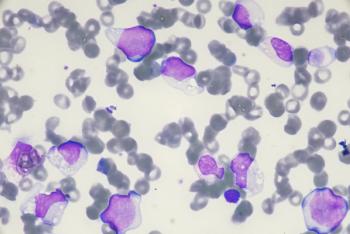
COPD one of ‘most important’ diagnoses to manage in ACOs
To succeed as a Next Generation ACO, Indiana University Health system is changing its COPD care management approach.
The two major goals of the
In January, Indiana University Health in Indianapolis entered into the NGACO Model. To ascertain how the model might impact treatment of patients with chronic obstructive pulmonary disease (COPD), Managed Healthcare Executive (MHE) asked Richard Bernhardt, MD, medical director of population health for Indiana University Health Physicians, to share his thoughts.
MHE: Does COPD present a particular challenge with the NGACO Model?
BernhardtBernhardt: It is no surprise that the evidence demonstrates that COPD is probably one of the most important diagnoses we truly need to get a handle around as we manage populations, specifically in an ACO Medicare population.
We felt that while all of our primary care physicians were using evidence-based practice to their best ability, this practice had wide variation in caring for COPD, especially working inside a healthcare system.
As a result, earlier this year we partnered with a pulmonologist from Indiana University School of Medicine who had a published study within the past five years that placed COPD patients in a very prescribed program and followed them over time compared to a matched cohort. This was the foundation for us writing what we call our COPD playbook.
MHE: What are the highlights of your COPD playbook?
Bernhardt: There is a clinical portion describing how you should care for COPD patients, which lines up very well with international guidelines. There is also a section on how we navigate a COPD patient through our system and best leverage our resources.
One area we looked at was pulmonary function testing. What do our primary care doctors really know about ordering this testing? What are the specifics you should order to effectively receive what you need right away? We found a major gap in knowledge.
Similarly, when should you refer a COPD patient to a pulmonologist? Do pulmonologists want to see patients earlier or later? It kind of depends on your system resources. But we want our primary care physicians to be prepared ahead of time so a patient does not a waste a visit with a pulmonologist.
MHE: How will these proactive steps benefit your involvement in the NGACO Model?
Bernhardt: We hope to leverage our Indiana University Health Plan and our ACO claims data to pinpoint some of the key drivers of whether COPD care is going well or not, and then track those drivers by physician. Also, we will marry those drivers to patient outcomes by physician.
As a result, we will receive feedback on whether what we are recommending is actually paying off in good, efficient care. This information can then be shared with individual physicians to see how they are doing and how their treatment strategies may vary or match up with what we consider the standard of care.
MHE: Are there any liabilities to the NGACO Model?
Bernhardt: When you engage in a NGACO Model, you as a healthcare system are taking upside and downside risk. Therefore, the model all of a sudden becomes a great motivator for the system to look at care and to start filtering that risk down to your physician groups or smaller physician practices.
The model is also a potent motivator to start using the data.
In addition, when you engage in the NGACO Model, you know upfront, at the beginning of the year, [which patients are included in the model], which is different than the traditional ACO Model, where you find out your cohort after the fact.
The next generation model also allows you to track your outcomes. You have more insight into utilization data. This provides you a lot of power to collect performance data. It has been a big boon to us.
For example, being able to go to a primary physician and say that your patients with COPD are utilizing the emergency department too much becomes much more real to that physician when you have data on 200 or 500 patients.
As we compile results from our NGACO Model, I anticipate it will bring a sharper focus to our physicians on how well they are managing specific disease processes like COPD.
Newsletter
Get the latest industry news, event updates, and more from Managed healthcare Executive.





















































